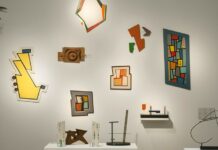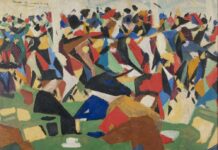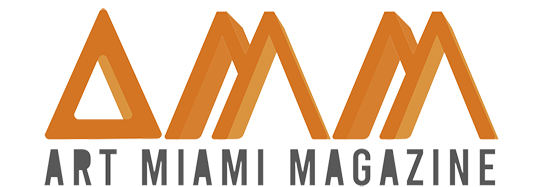| When | Sunday 20th at 11 AM – 3 PM |
PAN AMERICAN ART Projects
274 NE 67th Street, Miami, Florida 33138
Abstraction, understood as the type of depiction which doesn’t represent figurative elements or any form of historicism, has been present in many cultures from its early periods. There are countless examples of Prehistoric art and other cultures such as Pre Colombian, Asian and African which show abstract features. In Western art, we could argue that from the 19th Century there were artists who started to produce paintings in which abstract elements began to surface as dominants. Among those, we could mention the Expressionists Edward Munch and James Ensor. Paul Cezanne is another artist from that period who developed formal elements that would prove essential for the development of abstraction as a movement.
Though, it is at the beginning of the 20th century with Piet Mondrian’s reticular images with few flat colors, and Wassily Kandinsky’s iconic White over White that surfaced the beginning of a new era for abstraction and art perception in general. There was also an important art school, The Bauhaus, founded in 1919 in Germany: under its auspices, many artists established novel concepts that transformed art and design.
In the Americas, their counterpart would be the Uruguayan painter Joaquin Torres Garcia, who was living in Paris in 1929 and founded the group Cercle et Carré. He would eventually return to his country and establish his studio, influencing many artists in the region.
However, when we think about Contemporary Abstract art what comes to mind is the Abstract Expressionism and the New York School, in the forties, with the works of artists such as Hans Hoffman, Mark Rothko, Jackson Pollock, Robert Motherwell, and Franz Kline, among others. Currently, there is an exhibition at the Metropolitan Art Museum titled Epic Abstraction: Pollock to Herrera, which presents a survey of works by abstract artists from the 1940s to the present. The Universal Language of Abstraction is an exhibition that aims to explore the abstract trends in Contemporary Art through the works of artists with diverse origins, backgrounds, and techniques. The works of these contemporary artists undoubtedly show the influence of their predecessors and certainly benefited from all their conceptual and formal contributions. Throughout the pieces in this exhibition, we can recognize “borrowed” elements as well as their own input, which make them unique.
Curated by Irina Leyva-Perez
ARTISTS
Luis Cruz Azaceta, Hope Brooks, Agustín Cárdenas, Juan Roberto Diago, Deborah Eyde, Carlos García de la Nuez, Paul Hunter, Guido Llinás, Raúl Martínez, José Mijares, Raúl Milián, Alicia Penalba, Carlos Quintana, Mariano Rodríguez, Kasuya Sakai, Carolina Sardi, Toña Vegas













